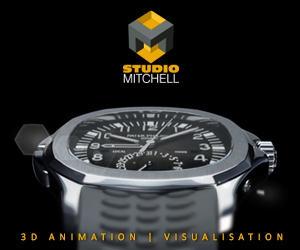Broadcast News
22/04/2013
Arguments For And Against 4K - Part One
The next generation of HD – 4K resolution – has been dividing those within the industry since its release, with many arguments for and against its use. Below, Barry Bassett, Managing Director at VMI.TV Ltd explains his thoughts on 4K.
The argument against 4K
Firstly, let me state that I am not against 4K. I agree that 4K images are stunning, only we need to be clear about what the reasons are, what the practicalities are, what the cost is and whether all of the hassle is actually worth the trouble right now in order to produce 4K images. That is the crux of my argument.
4K is not new – RED have been trailblazing 4K acquisition ever since the introduction of the RED One some years ago and this has been bolstered recently with the range of new cameras from Sony: the F-65 and the recent introduction of the PMW-F55, PMW-F5; RED: Epic, Scarlet and RED M-X and now the Black Magic Cinema Camera and even the Go Pro Hero 3. All of which claim to offer unrivaled image clarity and detail.
Firstly do we actually need 4K or UltraHD (UHD) as the consumer electronics industry is calling it?
Retiring HBO pioneer Bob Zitter doubts that consumers "barely notice the difference between 4K and existing HD on sets around 60in-70in in size", which Zitter reckoned would be the maximum size widely deployed. On this basis, the industry certainly need look no further than 1080p HD, which is double the resolution of 1080i or 720p, and is itself not widely deployed for linear TV delivery.
Again, the conventional wisdom within the industry is that 1080p HD does not deliver a substantial enough increase in quality over 1080i or 720p HD to be worth the effort of deploying across the content ecosystem, and that the logical next step forward would be to 4K.
John Galt, SVP Panavision claimed recently at a 2012 Creative Cow seminar that viewing 4K at normal theatre distances will result in you not being able to see sharpness at the pixel level as the pixels are too small. He concluded that, "…in order to see the detail provided by the pixels in a 4K image, you would need to sit in the first six rows of a theatre, otherwise you won’t see the extra image detail."
This is without acknowledging that many digital cinemas are only presently capable of displaying only 2K images right now.
His argument followed that, "We perceive edge sharpness as contrast between the edge and what’s behind it", so do we, the audience, really want a 4K image when HD does the job perfectly well. In many types of image – fast moving drama for instance, you can’t see the detail that 4K enables because the pictures are moving too fast. John Galt recommends, "If you want greater resolution, shoot at higher frame rates, not more pixels. We can achieve this now with existing HD technology and shoot at 48P instead of 24P, otherwise you simply create very high resolution images with a lot of image motion blur."
Whilst I am on the subject of high-resolution blurry images, it is virtually unheard of for top DoPs to shoot with very expensive lenses at extremely high resolution without inserting a softening piece of glass in order to reduce the sharpness of the images – how can 4K benefit the viewer under these conditions?
This is part of the 4K is not always 4K argument, where the devil of the detail is in the pattern… Debayering is the process of extrapolating colour information using a single sensor and has the result of reducing the colour detail, so that the actual resolution is less than the sensor promises.
This actually means that 4K images from a RED EPIC, whilst better than 4:4:4 HD, are not as ‘better’ as the numbers suggest. This is a very important point, as whilst the ARRI Alexa is not a 4K camera, it does use a 3.5K sensor.
As well as recording on-board to SxS cards in 1080, its de-bayered RAW output can be recorded on external devices at 2800 x 2160 - almost 3K. These RAW files offer improved dynamic latitude for excellent highlight control, as well as greatly increased resolution.
Skyfall was shot by Roger Deakins using the Arri RAW 2K+ workflow, with the output recorded by a Codex device. Versions were prepared for 4K cinemas with the files simply up-converted and it looked fantastic! In contrast to this, the Blackmagic camera shoots 2.4K before debayering and the Go Pro Hero 3 only shoots 4K images at 16 frames per second – so neither of these are in contention for a 4K level of acceptability.
www.vmi.tv
(JP/CD)
The argument against 4K
Firstly, let me state that I am not against 4K. I agree that 4K images are stunning, only we need to be clear about what the reasons are, what the practicalities are, what the cost is and whether all of the hassle is actually worth the trouble right now in order to produce 4K images. That is the crux of my argument.
4K is not new – RED have been trailblazing 4K acquisition ever since the introduction of the RED One some years ago and this has been bolstered recently with the range of new cameras from Sony: the F-65 and the recent introduction of the PMW-F55, PMW-F5; RED: Epic, Scarlet and RED M-X and now the Black Magic Cinema Camera and even the Go Pro Hero 3. All of which claim to offer unrivaled image clarity and detail.
Firstly do we actually need 4K or UltraHD (UHD) as the consumer electronics industry is calling it?
Retiring HBO pioneer Bob Zitter doubts that consumers "barely notice the difference between 4K and existing HD on sets around 60in-70in in size", which Zitter reckoned would be the maximum size widely deployed. On this basis, the industry certainly need look no further than 1080p HD, which is double the resolution of 1080i or 720p, and is itself not widely deployed for linear TV delivery.
Again, the conventional wisdom within the industry is that 1080p HD does not deliver a substantial enough increase in quality over 1080i or 720p HD to be worth the effort of deploying across the content ecosystem, and that the logical next step forward would be to 4K.
John Galt, SVP Panavision claimed recently at a 2012 Creative Cow seminar that viewing 4K at normal theatre distances will result in you not being able to see sharpness at the pixel level as the pixels are too small. He concluded that, "…in order to see the detail provided by the pixels in a 4K image, you would need to sit in the first six rows of a theatre, otherwise you won’t see the extra image detail."
This is without acknowledging that many digital cinemas are only presently capable of displaying only 2K images right now.
His argument followed that, "We perceive edge sharpness as contrast between the edge and what’s behind it", so do we, the audience, really want a 4K image when HD does the job perfectly well. In many types of image – fast moving drama for instance, you can’t see the detail that 4K enables because the pictures are moving too fast. John Galt recommends, "If you want greater resolution, shoot at higher frame rates, not more pixels. We can achieve this now with existing HD technology and shoot at 48P instead of 24P, otherwise you simply create very high resolution images with a lot of image motion blur."
Whilst I am on the subject of high-resolution blurry images, it is virtually unheard of for top DoPs to shoot with very expensive lenses at extremely high resolution without inserting a softening piece of glass in order to reduce the sharpness of the images – how can 4K benefit the viewer under these conditions?
This is part of the 4K is not always 4K argument, where the devil of the detail is in the pattern… Debayering is the process of extrapolating colour information using a single sensor and has the result of reducing the colour detail, so that the actual resolution is less than the sensor promises.
This actually means that 4K images from a RED EPIC, whilst better than 4:4:4 HD, are not as ‘better’ as the numbers suggest. This is a very important point, as whilst the ARRI Alexa is not a 4K camera, it does use a 3.5K sensor.
As well as recording on-board to SxS cards in 1080, its de-bayered RAW output can be recorded on external devices at 2800 x 2160 - almost 3K. These RAW files offer improved dynamic latitude for excellent highlight control, as well as greatly increased resolution.
Skyfall was shot by Roger Deakins using the Arri RAW 2K+ workflow, with the output recorded by a Codex device. Versions were prepared for 4K cinemas with the files simply up-converted and it looked fantastic! In contrast to this, the Blackmagic camera shoots 2.4K before debayering and the Go Pro Hero 3 only shoots 4K images at 16 frames per second – so neither of these are in contention for a 4K level of acceptability.
www.vmi.tv
(JP/CD)
Top Related Stories
Click here for the latest broadcast news stories.
09/06/2014
4K OK? Understanding UltraHD... (Pt 1)
In a bid to get his head around the intricacies of 4K format ahead of this summer's landmark broadcasting event, editor Iain Todd spoke to some indust
4K OK? Understanding UltraHD... (Pt 1)
In a bid to get his head around the intricacies of 4K format ahead of this summer's landmark broadcasting event, editor Iain Todd spoke to some indust
09/06/2014
4K OK? Understanding UltraHD... (Pt 2)
"The latest workstations and professional laptops are now up to the task of 4K content creation and NLE developers are all beginning to support native
4K OK? Understanding UltraHD... (Pt 2)
"The latest workstations and professional laptops are now up to the task of 4K content creation and NLE developers are all beginning to support native
04/06/2014
BroadcastAsia2014: 4K To Transform Onscreen Viewing
HD (high definition) viewing will soon be a technology of the past, as a result of the proliferation of 4K coming Asia's way. 4K, also commonly known
BroadcastAsia2014: 4K To Transform Onscreen Viewing
HD (high definition) viewing will soon be a technology of the past, as a result of the proliferation of 4K coming Asia's way. 4K, also commonly known
15/06/2023
S4 Studios Relies On AJA GEN10 HD/SD/AES Sync Generator
S4 Studios is a one-stop-shop for virtual production and visual effects, with a studio in Los Angeles and a virtual production stage up the road in Ca
S4 Studios Relies On AJA GEN10 HD/SD/AES Sync Generator
S4 Studios is a one-stop-shop for virtual production and visual effects, with a studio in Los Angeles and a virtual production stage up the road in Ca
04/04/2014
Sony And FIFA To Collaborate On A Range Of 4K Initiatives
Sony and FIFA (Fédération Internationale de Football Association) have announced they will collaborate on a range of 4K initiatives at the 2014 FIFA W
Sony And FIFA To Collaborate On A Range Of 4K Initiatives
Sony and FIFA (Fédération Internationale de Football Association) have announced they will collaborate on a range of 4K initiatives at the 2014 FIFA W
29/04/2014
Asia Gears Up For 4K
4K is "coming Asia's way," according to the organisers of BroadcastAsia, the digital multimedia and technology conference taking place this year in Si
Asia Gears Up For 4K
4K is "coming Asia's way," according to the organisers of BroadcastAsia, the digital multimedia and technology conference taking place this year in Si
02/11/2016
Marquis Broadcast To Attend NAB New York
Marquis Broadcast is to demonstrate its latest workflow integration solutions at NAB New York 9 - 10 November on booth 652. Marquis will showcase a ne
Marquis Broadcast To Attend NAB New York
Marquis Broadcast is to demonstrate its latest workflow integration solutions at NAB New York 9 - 10 November on booth 652. Marquis will showcase a ne
09/11/2012
4K Or Not 4K – That Is The Question
A producer’s guide to the pros and cons of shooting in 4K What is 4K? Whether a video format is either 'standard' or 'high definition' has always been
4K Or Not 4K – That Is The Question
A producer’s guide to the pros and cons of shooting in 4K What is 4K? Whether a video format is either 'standard' or 'high definition' has always been
11/04/2012
JVC Unveil World's First Handheld 4K Camcorder
JVC Professional Europe is showing the new GY-HMQ10, the world’s first handheld 4K camcorder, at the NAB show. The camcorder captures, records and pla
JVC Unveil World's First Handheld 4K Camcorder
JVC Professional Europe is showing the new GY-HMQ10, the world’s first handheld 4K camcorder, at the NAB show. The camcorder captures, records and pla
07/09/2015
Canon Launch New 2/3" 4K Field Lenses
Canon has launched two new 2/3" 4K field lenses; the UHD DIGISUPER 86 (UJ86x9.3B) and UHD DIGISUPER 90 (UJ90x9B). Both are suitable for use within liv
Canon Launch New 2/3" 4K Field Lenses
Canon has launched two new 2/3" 4K field lenses; the UHD DIGISUPER 86 (UJ86x9.3B) and UHD DIGISUPER 90 (UJ90x9B). Both are suitable for use within liv
11/04/2018
AJA Introduces Five New OpenGear Cards At NAB 2018
AJA Video Systems has unveiled five new openGear-compatible video and audio rack cards, with support for Ross® Video DashBoard software for remote con
AJA Introduces Five New OpenGear Cards At NAB 2018
AJA Video Systems has unveiled five new openGear-compatible video and audio rack cards, with support for Ross® Video DashBoard software for remote con
24/04/2014
Sony Adds 4K Live Streaming Support To BRAVIA™ 4K Ultra HD TVs
From August this year, every BRAVIA™ 4K Ultra HD TV owner will be able to enjoy video content streamed with the increasingly popular HEVC (H.265) stan
Sony Adds 4K Live Streaming Support To BRAVIA™ 4K Ultra HD TVs
From August this year, every BRAVIA™ 4K Ultra HD TV owner will be able to enjoy video content streamed with the increasingly popular HEVC (H.265) stan
14/10/2014
JVC Unveils 4K Technology Prototypes
The electronics giant unveiled new additions to the 4K family at this year's IBC show, including the new GY-LS300 Super 35mm sensor 4K camera... GY-LS
JVC Unveils 4K Technology Prototypes
The electronics giant unveiled new additions to the 4K family at this year's IBC show, including the new GY-LS300 Super 35mm sensor 4K camera... GY-LS
29/01/2014
Io 4K Now Available
AJA Video Systems has announced availability of Io 4K, an evolution of its popular devices for professional video I/O, updated and customized for Thun
Io 4K Now Available
AJA Video Systems has announced availability of Io 4K, an evolution of its popular devices for professional video I/O, updated and customized for Thun
20/05/2016
Ikegami To Showcase Latest Camera Technology In Cologne
Ikegami Electronics Europe has announced a demonstration of its latest television production and monitoring equipment on Wednesday, 08 June at MMC Stu
Ikegami To Showcase Latest Camera Technology In Cologne
Ikegami Electronics Europe has announced a demonstration of its latest television production and monitoring equipment on Wednesday, 08 June at MMC Stu















